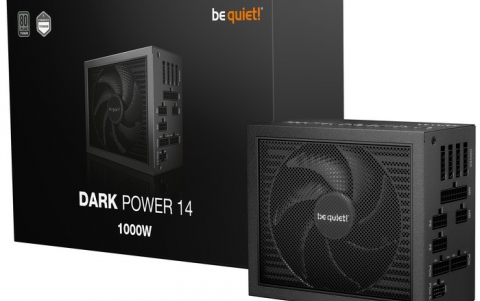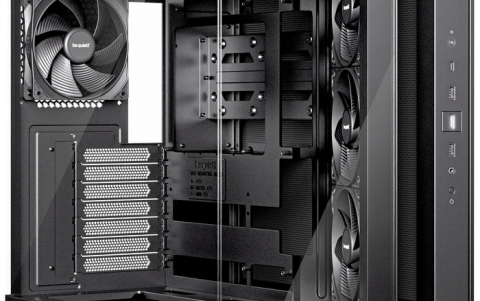ASUS PhysX P1 Card
11. Reality Mark - Page 1
 AGEIA RealityMark™ is a new tool which demonstrates the feature and performance value of AGEIA PhysX in a physics-intensive gameplay environment. It’s designed to illustrate how next-generation game design uses the power of the PhysX processor to enable leading-edge, physically interactive gameplay elements which were not possible until now.
AGEIA RealityMark™ is a new tool which demonstrates the feature and performance value of AGEIA PhysX in a physics-intensive gameplay environment. It’s designed to illustrate how next-generation game design uses the power of the PhysX processor to enable leading-edge, physically interactive gameplay elements which were not possible until now.

RealityMark is based on a version of CellFactor: Combat Training from Artificial Studios and Immersion Games. It utilizes a pre-scripted gameplay sequence much like a time demo to compare in-game performance of hardware and software PhysX. The scripted sequence is played once with the PhysX processor enabled and a second time with it disabled to determine the relative performance of each. It then returns the results in terms average Frames Per Second (FPS).
The gameplay sequence records a player interacting with elements such as tearing cloth and thousands of rigid bodies such as boxes, pipes and other containers. Future versions of RealityMark will add even more computationally intensive physics elements.
 As with any tool of this nature, results of both tests will vary from system
to system depending on the specific hardware configuration. As Ageia comments "...Buyers should consult other sources of information to evaluate the actual
performance of systems they are considering purchasing..."
As with any tool of this nature, results of both tests will vary from system
to system depending on the specific hardware configuration. As Ageia comments "...Buyers should consult other sources of information to evaluate the actual
performance of systems they are considering purchasing..."
As we all understand, this tool is not a means of determining the raw performance of the PhysX Accelerator, but rather is designed to provide a useful comparison under the specific conditions in this particular title and under these specific physics-intensive circumstances.
The test results may or may not reflect the relative performance of the PhysX processor in systems with different hardware or software capabilities or configurations, and results will differ depending on the physics demands of the particular game being played.
- AGEIA RealityMark Features
There are physics interaction levels that vary from a small number of rigid
body object collisions to many thousands, including some impact with
complex cloth objects. Such increases in physics activity and associated
calculations can occur rapidly. This happens during explosion sequences
where the demand for physics calculations immediately increases.The sequence includes physically simulated cloth which is deformable
and can be torn realistically. The cloth interacts with both player weapons
and other objects in the battlefield. Visualization leverages DirectX 9.0 graphics features such as High
Dynamic Range (HDR) Lighting and dynamic shadows to best
approximate the graphical demands of this title and most other DirectX 9.0
titles.
- Comparing Non-Accelerated vs. Hardware-Accelerated PhysX
Every effort has been made to allow for a fair comparison of PhysX simulation in a software-only environment as compared to a hardware implementation of PhysX. Due to the complex nature of game physics, subtle differences can be seen during the two runs of the test. These differences are essentially due to the loss of accuracy when performance drops below that needed for real-time simulation.
Physic simulation requires the solution of many complex equations to determine the change of state of the game objects during a fixed duration of time, also known as a ‘time step’. Should these calculations take too long to accomplish, the physics subsystem will lag behind the game’s global time. One way to adjust for this is to increase the size of the time step in each simulation iteration. This allows the objects to keep up with real-time, but greatly increases the chances that some object interactions or collisions will be completely missed. This can be seen during the nonaccelerated simulation on some systems, as some objects fly through the cloth banner without causing tearing.

During testing in AGEIA test labs, it’s been determined that all major components of today’s high-performance PC can impact the actual performance measures. This includes, but isn’t limited to, CPU speed, number of processor cores, GPU speed and system memory. Each of the core elements of the Gaming Power Triangle, the PPU (Physics Processing Unit), CPU, and GPU, has important roles to play to enable optimal gaming. It is recommended that tests be run several time to determine the average results for your system and achieve the most accurate possible result. There will be some variance in the measured frame rate between different runs of the test due to the complex balance of the PPU, CPU and GPU operations.
- System Requirements For RealityMark
- AGEIA PhysX Accelerator with latest drivers (2.5.1 or later required)
- Microsoft Windows ® XP 32-bit or 64-bit
- 1GB System RAM or higher
- At least 1 GB free hard disk space
- Intel® Pentium® 4 or Celeron Processor, 1.5GHz or higher OR AMD Athon XP™ 2400+ or higher
- DirectX 9.0 graphics adapter with 128MB RAM or higher





















